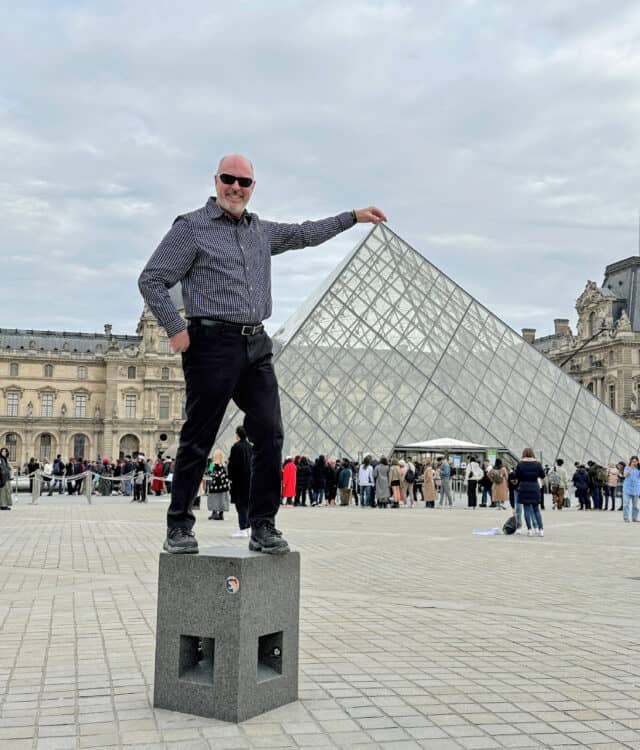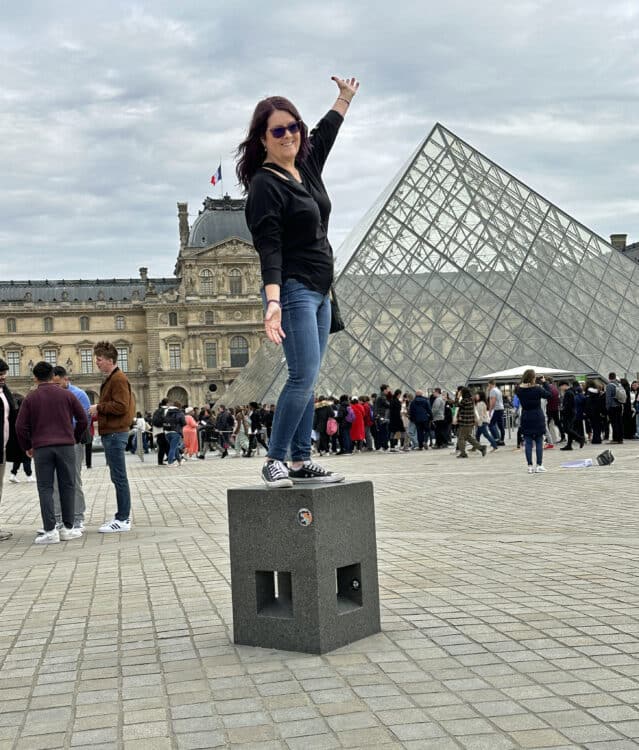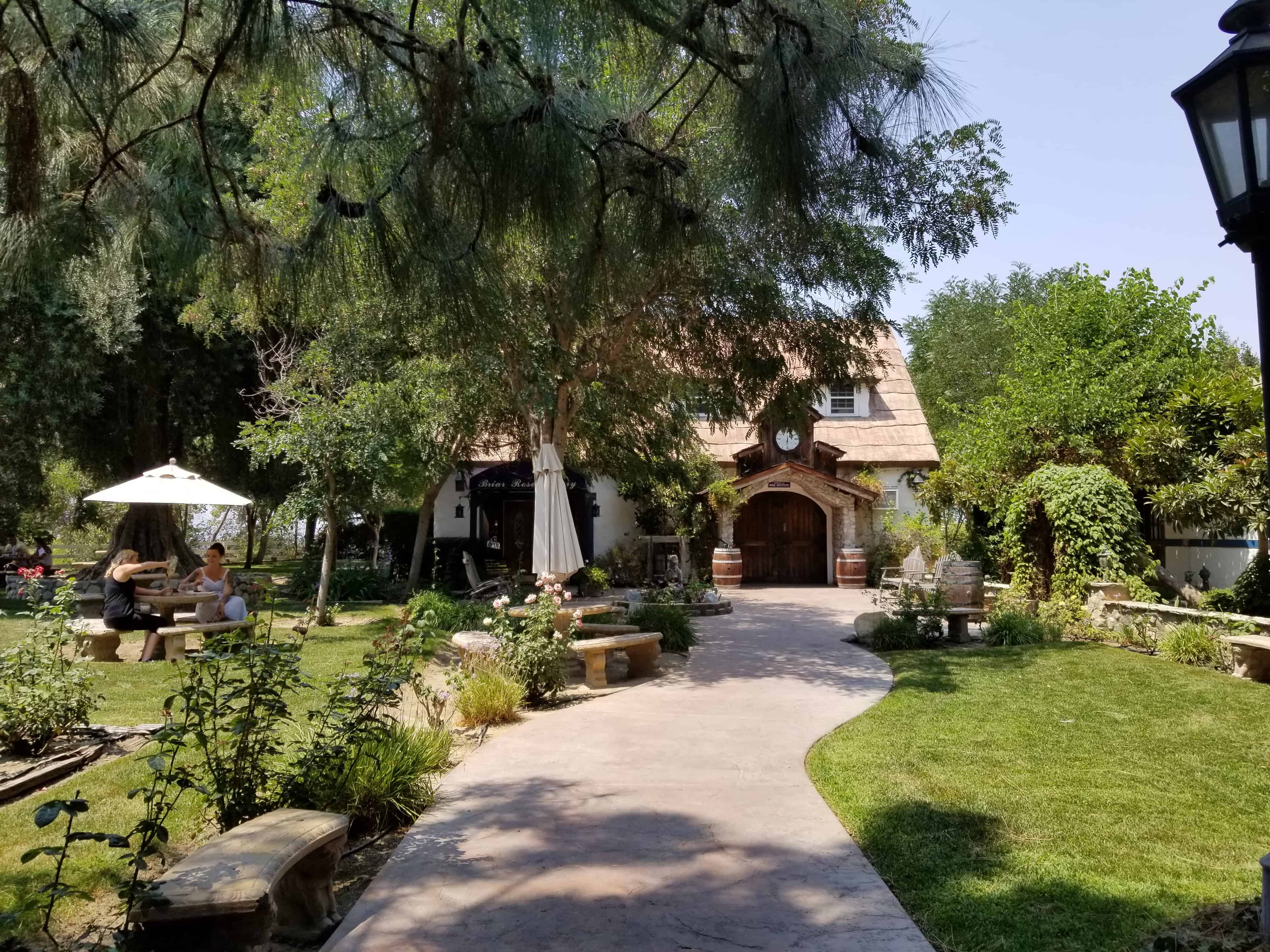Visiting the Louvre: What to See at the Louvre in One Day
When I told people we were taking our vacation in Paris, the first question I got asked every single time was: what do you want to see the most? The world famous museum, the home of the Mona Lisa, was an easy answer. Visiting the Louvre has been on my bucket list long before I started studying art in college. We had a packed schedule, so we had to limit the lengths of everything, and I know that we aren’t the only people planning a Paris trip in the same boat, so here are our tips on what to see at the Louvre in one day!

Visiting the Louvre, Paris: What to See at the Louvre In One Day
First, a little bit about the Louvre, or as they say in France, “loo-ver.” (Don’t be like me and have to get corrected.) It was a royal residence that became a museum in 1793 during the French Revolution. It houses artwork in the three main interconnecting wings on five levels. It is much like a big U, with that famous glass pyramid ground level in the middle.
The Louvre is open every day except Tuesday, from 9am until 6pm, but they are open until 9:45pm on Fridays. Tickets should be purchased online. Make reservations — they do sell out, and the standby line can take quite a while. As of the day of this writing, tickets are 17 Euros without any tour, and that’s via the museum website directly. However, if you are visiting the Louvre for just one day, I highly recommend the tour. The museum is vast and the most prominent pieces of art tend to get crowded. A tour guide can not only get you from one exhibit to another, but they can also navigate crowds and explain various pieces.
This post, as many posts on our site, uses affiliate links; it costs you no extra to click and use my link, and we get a small commission. This doesn’t change your rate at all, so thank you in advance for clicking!
We purchased our tour via GetYourGuide.com. Get Your Guide offers a lot of different tours, from larger groups to very private groups. Some focus on very specific exhibits, while others are mainly there to avoid the standby line and you walk the museum entirely on your own. Most tours offer the ‘skip the line’ option, and you can then break free from your guide, or you can follow them throughout the entire building depending on which tour you chose. If you have a one-day itinerary for the Louvre, this matters even more.
We chose the “must see” tour, which cost $249 total for us both. (Price has gone up a small amount since we took the tour.) The tours are handled by individual tour companies in Paris, and ours was provided by Babylon Tours. We met our guide, Dasha, by a statue in front of the pyramid. She was an incredibly knowledgeable college student who spent just enough time telling us about the history and inspiration of the artwork, all the way down to the reason why models posed in specific manners, and the difference between Greek and Roman sculptures.
But first, our “funny thing happened on the way to the Louvre” story. We stayed at the Pullman Eiffel Tour (more about that here) and it should have been a 10-15 minute taxi ride. However, our tour started at 10am and we left our hotel at about 9:10am….plenty of time, right? There were NO TAXIS ANYWHERE. Our hotel guy, someone we only saw that one day, gave no cares. We started walking, then we started running, and if you’re familiar at all with rush hour Paris traffic, you know it’s crazy. Bikes were honking at us, we were crossing streets randomly. Taxis were all full, we couldn’t even find a car to throw money at. It was ugly. Near tears, I ran towards a bus that stopped in front of us. “Does this go to the Loooove?” (I knew we were at least on the right street by this point.) “Yes, madame, this bus goes to the Loo-ver. Five Euros please.” Five minutes later, we were deposited across from the front gate, and we ran to meet our group, with three minutes to spare. Sweaty, red-faced and panting, but we made it.
There is a book and gift shop full of a lot of truly nice souvenirs. (I love my Mona Lisa coffee mug and use it often.) There are a few different cafeterias and cafes, but the Louvre does get crowded so seating isn’t guaranteed. The pastries in the Goguette cafeteria are fantastic! There is an Angela cafe, a must-see in Paris, but there is also one at the Palace de Versailles; it is equally crowded but if you can’t get in one, try for the other. They are known for their hot chocolate and you have got to try it at least once.
A really cool thing that the Louvre offers is free wheelchairs, baby carriers, folding stools, canes and pushchairs for those who need them! There is a lot of walking required and there are stairs, but there are also elevators. Wear good, comfortable shoes and check the weather in advance. The grounds are also beautiful, with the gardens in front as well, but the rain can pop up out of nowhere and it can be chillier than you expect.
If you don’t wish to get a tour guide, there is an audio guide available for rent for five euros; it’s on a Nintendo 3DS XL!
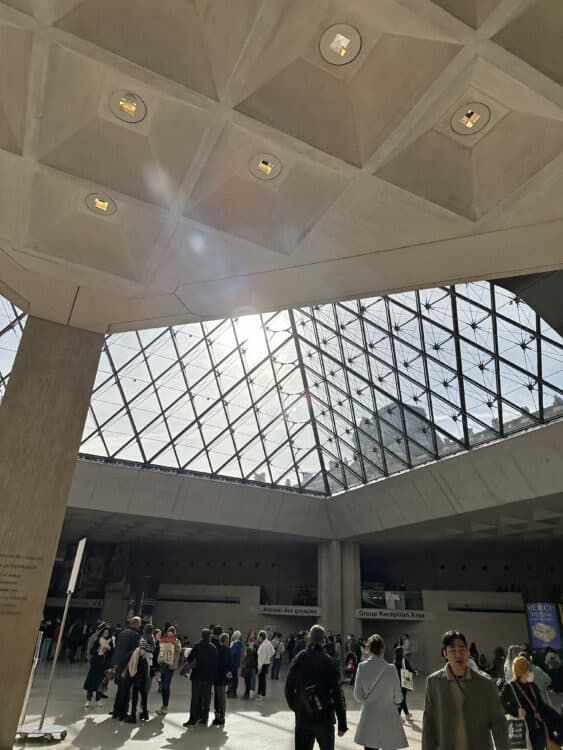
Tip: Use the restrooms under the pyramid after you enter. The ones inside can be a bit of a walk and lines can be longer.
Visiting the Louvre: Back to what to see at the Louvre in one day!
When you enter the museum, you come in via a moat. Who knew, right? Not even those working at the Louvre, until the mid 1980s, when excavations uncovered the castle keep, walls and moat from the Louvre fortress of Auguste Philippe. Don’t rush through here — it’s a relatively new addition in the big picture, and you’ll see separate carvings on each individual block. Those carvings each stood for the person/team who created the block, and the carvings are how the creators were paid daily for their work. It’s pretty spectacular.
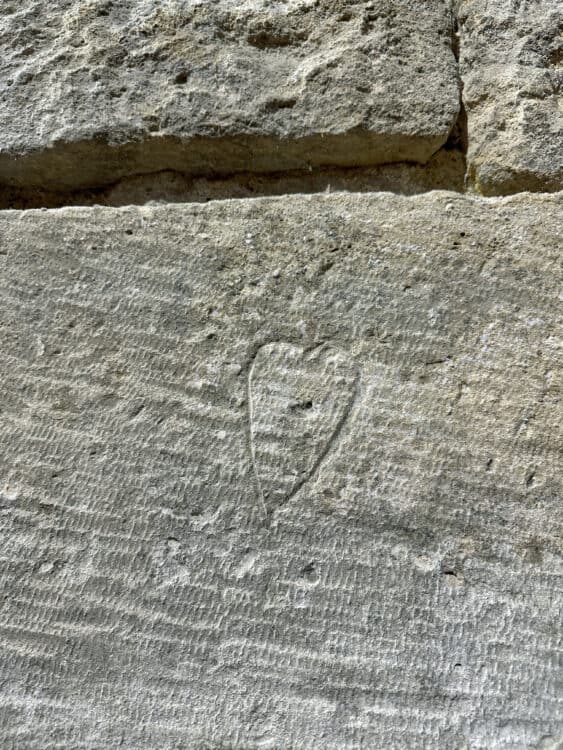

After you exit that area, you’ll come up the amazing sphinx, the Great Sphinx of Tanis. Because of her placement, she’s referred to as “guardian of the Louvre.” Her history is complex, and she was basically stolen during Napoleon’s exploration of Egypt. She’s regal, and you can’t help but be mesmerized by this piece, one of the biggest sphinxes outside of Egypt.
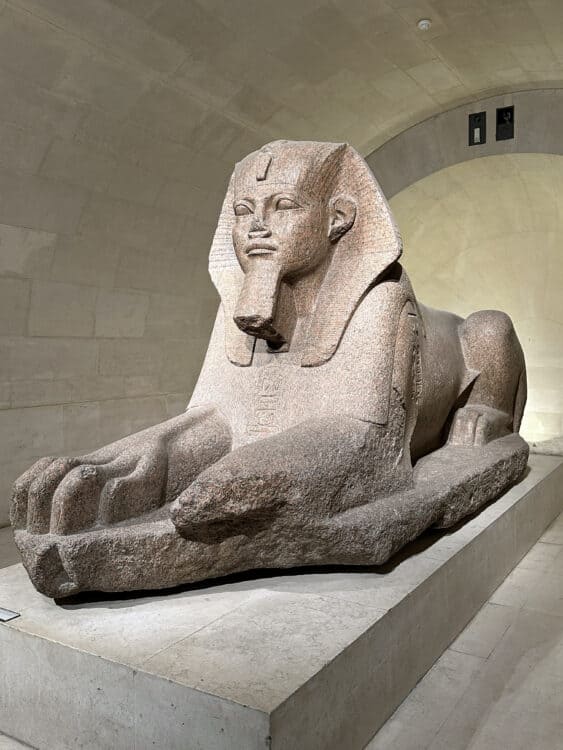
It goes without saying that you need to see the Mona Lisa; it gets busier as the day goes on, so I’d go here first, after you stroll through the moat. This is without a doubt the busiest exhibit in the entire museum. There is a long line through stanchions, which wraps back and forth across this very large room. It ends approximately 10′ or so from another stanchion in front of the Mona Lisa. (That last barrier also leaves 10-12′ of space in front of the painting.)
When you reach the end of the line, you are dumped a crowd of people with no real guidance. You basically have to patiently wait your turn to inch towards the barrier; you’re relying on everyone taking turns, and it can be a little uncomfortable if families push their kids forward in between you, as we experienced, or if they don’t move at all. That said, it went pretty smoothly, and we probably only waited about 10 minutes to be in front of the painting; we did have to hold our ground a little and hold onto each other in order to stay together.
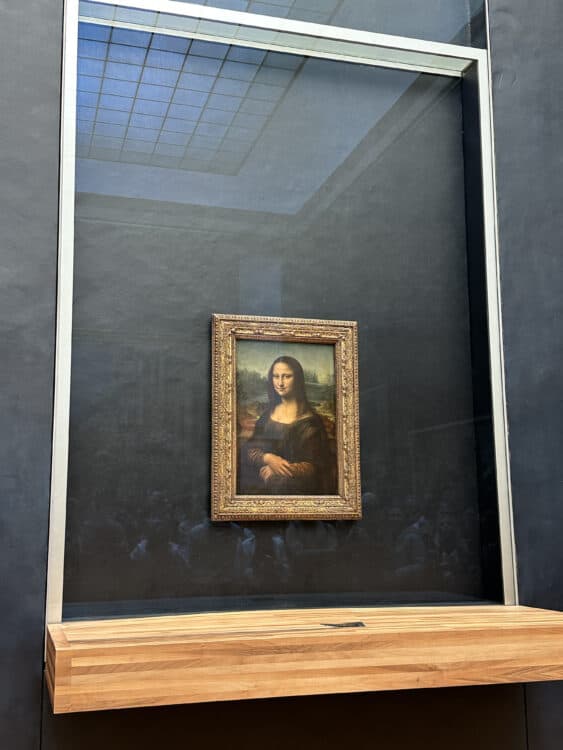
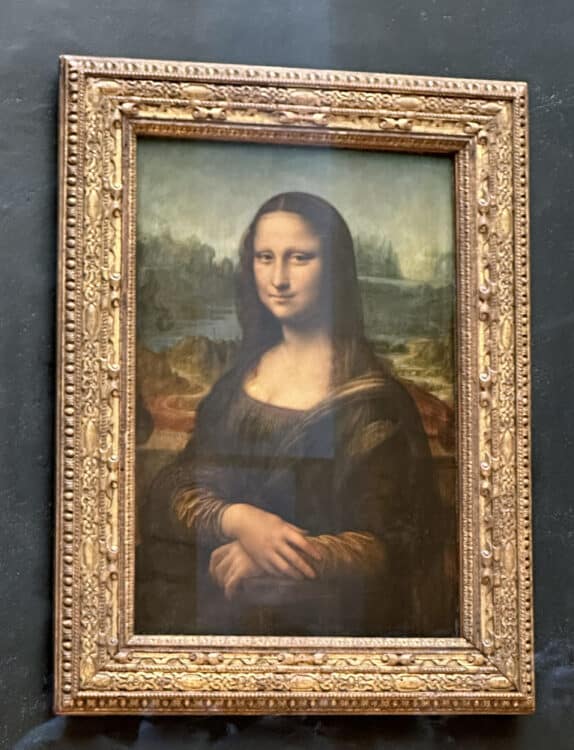
The Mona Lisa is behind glass, so it can be hard to get a perfect photo due to any glare. My recommendation? Grab a couple of photos, then put your phone away so you can truly just take it in. Soak in the beauty of the painting, the history behind it, its stories and mysteries. It’s awe-inspiring and incredible. There is a guard at the end who opens a gap in the stanchion every minute or two, allowing people who are done to exit. If you do not want to leave yet, step to the right or left of it or you may be squeezed out.
Worth EVERY single second, trust me.
There are quite a few other Michelangelo paintings in the Denon Wing, so give yourself at least 90 minutes or so to see them, even if you don’t dwell on any in particular. Also in the Denon wing is the Coronation of Napoleon, a huge painting with so much detail, you’ll want to give yourself at least 10 minutes to fully appreciate it. The painting portrays Napoleon’s coronation inside the Notre Dame Cathedral; it was commissioned by Napoleon and painted by Jacques-Louis David.
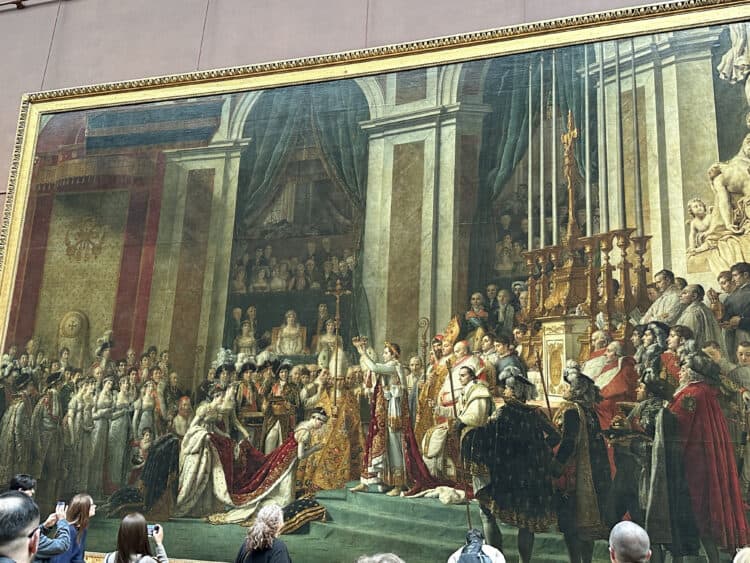
Do not miss the Gallery of Apollo. This long, gold-laden and ostentatious hall cannot be explained in words. Every bit of the ceiling has meaning, from astrological signs to historial events. In the middle of the room are glass cases of the French Crown jewels, china and elaborate housewares, the likes of which you cannot see anywhere else. Jewelry that Napoleon gifted to his wives gives ‘sparkle’ a new meaning. (Some of it is recreated, but most of it is the real thing.) It’s hard to believe people were actually able to walk with those crowns on their head, they appear so heavy and encrusted with gems.
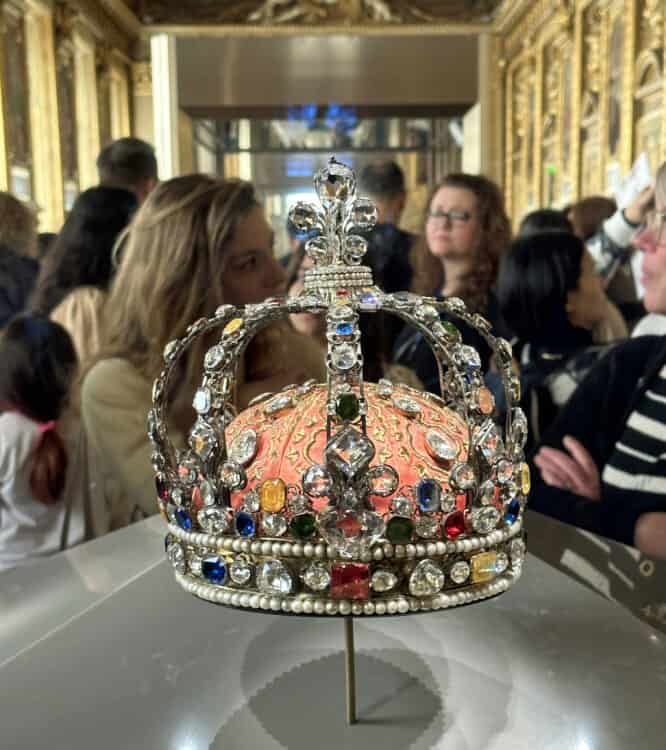
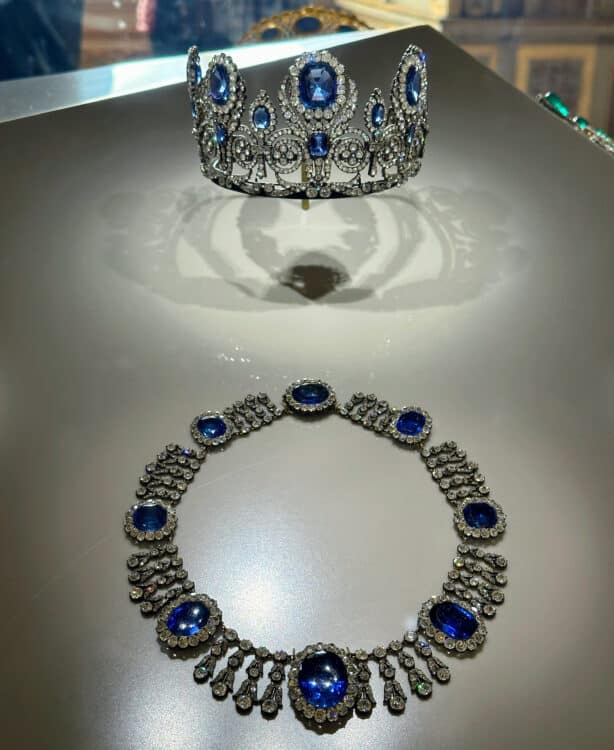
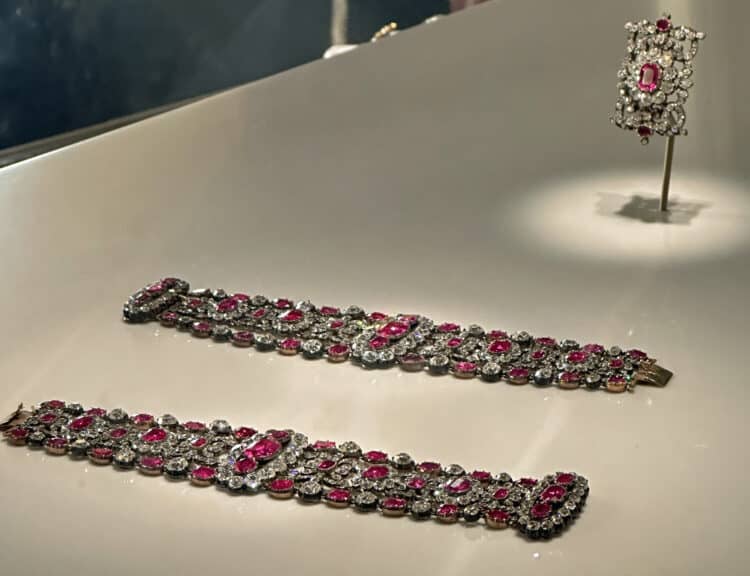
Don’t forget to look up!


Before you leave that wing, stop by Liberty Leading the People. (Try not to hear the music from Les Miserables as you take in this painting.) Painted by Delacroix, it represents the 1830 revolution. It is a collage of sorts and probably best storifies a historical moment than most other paintings out there.
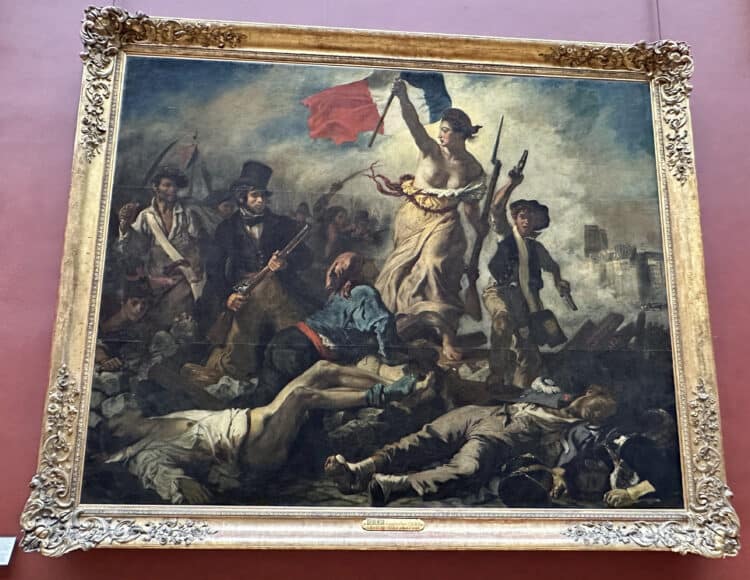
The Sully Wing is home to the Greek antiquities. This is where you will see a lot of sculptures you’ve seen on TV or in history books. These are easier to see than the paintings, because you can stand on all four sides of most of them. Don’t expect to have a lot of photo opps that are clear of other people; it rarely happens.
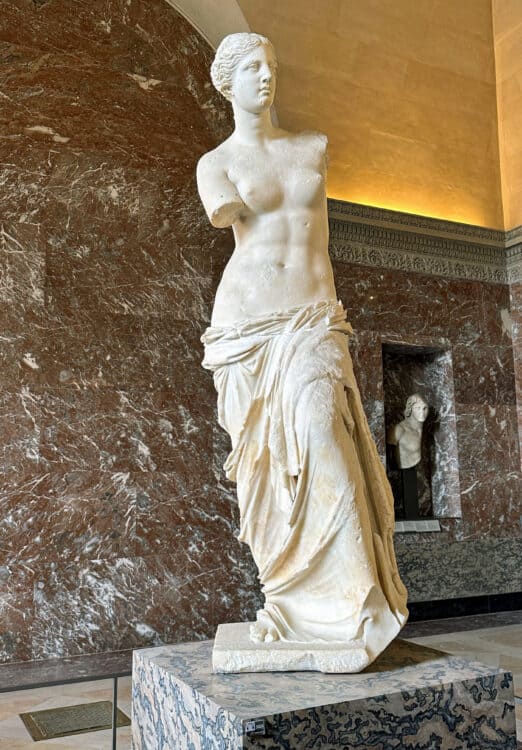
Head to see the Venus de Milo. She’s been at the Louvre since 1821 and her personal history is fascinating. This is one of those pieces you’ll want to hover at, circling around her to see it from all sides. It’s remarkable.
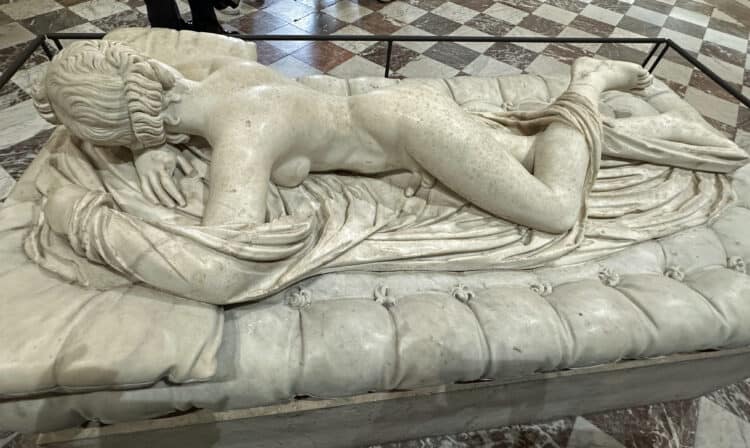
Take time to read the signs on the bigger pieces. There are little things you don’t want to miss.
Stop at the Winged Victory of Samothrace, also known as Nike. This Greek sculpture is missing its head and arms, but what remains is so beautifully sculpted, it will take your breath away. The location of the head and arms is unknown, but there is one hand in a side exhibit. You can view this from the same level as its base, the top of the Daru staircase, but be sure to walk up one of the flights of stairs to its left or right to see it more eye level. It’s a completely different perspective.
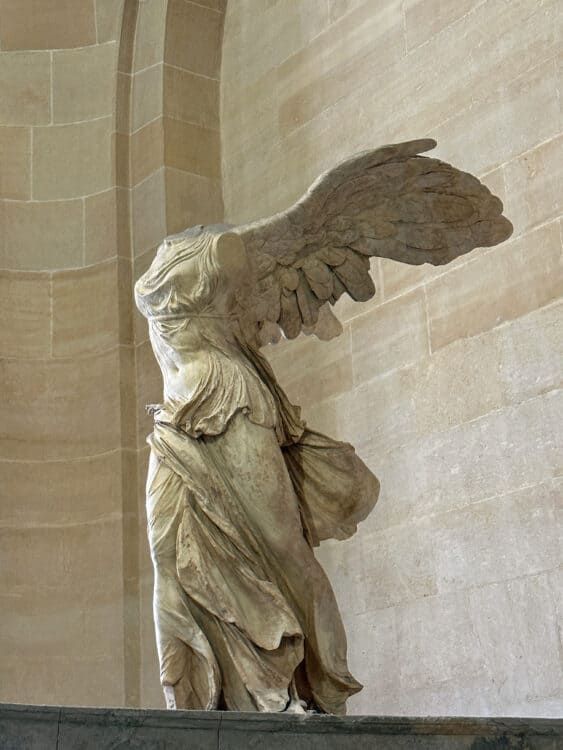

These are our top recommendations of what to see at the Louvre in one day. If you’re visiting the Louvre multiple times, you can head back to your favorite wings and explore, but even if you’re not a huge art lover, I promise you, there are areas that will suck you in.
If you have time, you can wander around the gardens; we were hungry and a bit peopled out, so we took a quick walk and headed towards a restaurant. (We were there in the early days of the protests, so some areas were more crowded, and as it wasn’t high tourist season yet, some things were under construction.)
Keep in mind, there are rules on what you can bring into the museum, so check their website, or ask your tour guide, if you have questions. I took only my purse, which they did search upon entry. I recommend an external battery for your cell phone, so you don’t worry about running out of battery by taking a lot of videos and photos. If someone has sound sensitivity, it can get loud, and there may be some jostling, particularly by the Mona Lisa.
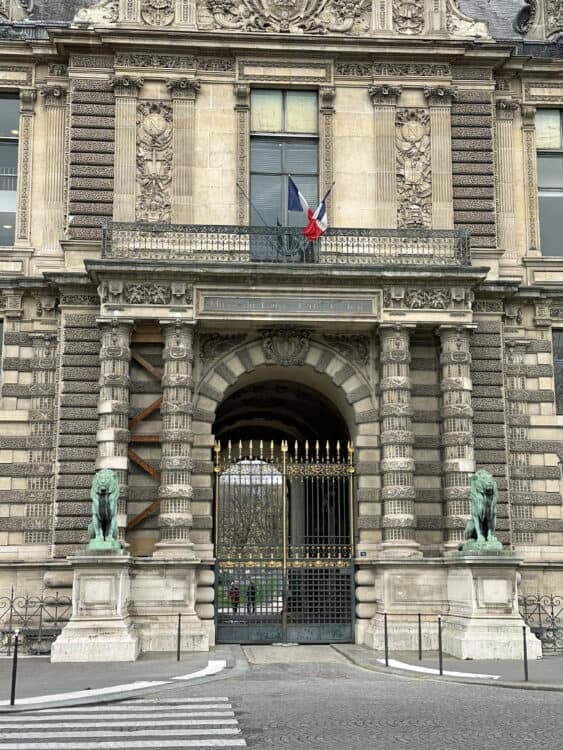
If you have an early tour, plan a car service ahead of time. Don’t rely on public transportation in the morning. We’d just arrived two days prior and hadn’t needed any taxis in that time, so we learned the hard way. Your hotel may help with this, or if you use a different tour company, they may offer a car service option. Save your steps for the Louvre, if you can.
One additional tip: you’re not horribly far from the Notre Dame Cathedral when you are at the Louvre. Depending on where you stay, it may be a good day to go visit it; the construction is now complete and you can tour inside. Do it. (There were only raised stands to sit when we visited, as it was still under construction, but have Euro coinage with you if you plan on using the outdoor restroom.)
Whatever your motivation is for visiting the Louvre, make the most of it. Don’t go home from Paris having missed something on your list. For me, it was the Mona Lisa. I’d run two miles to see it again if I had to. Just be sure to take one of the infamous dorky photos out front. (Be ready, there can be lines for each pedestal but why not?)
